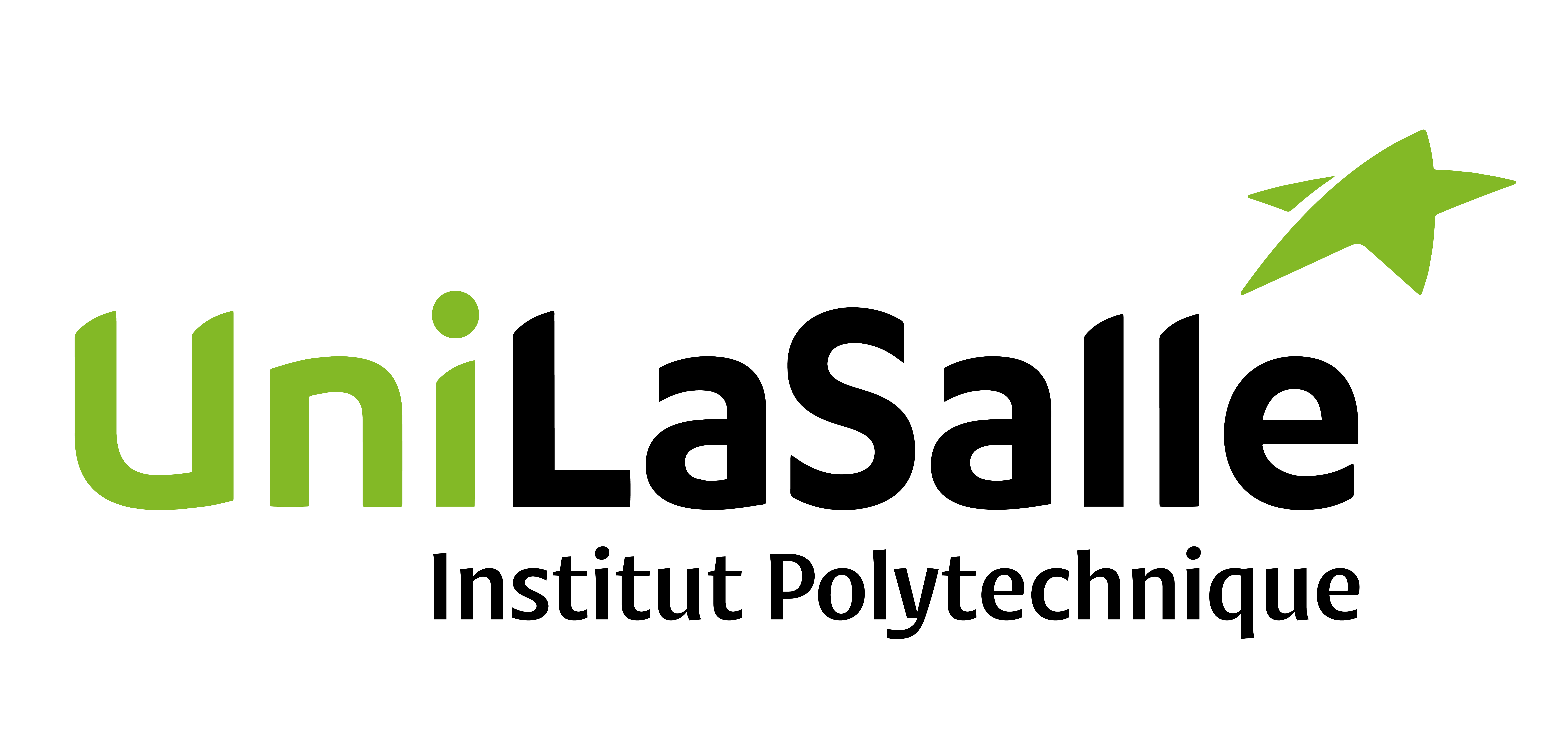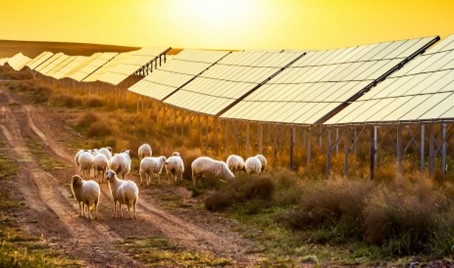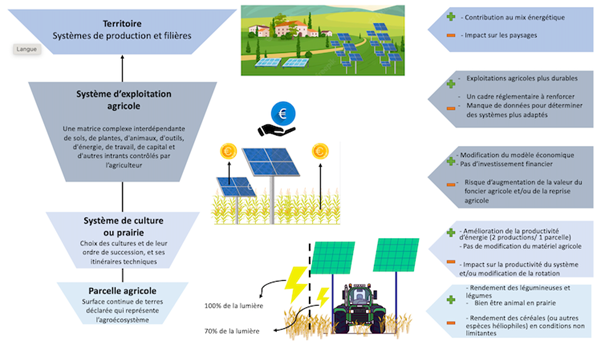This article is republished from The Conversation under a Creative Commons license. Read the original article.An agrivoltaic system combines solar panels with a crop, without causing significant damage to agricultural production or reducing farm revenues. It helps agricultural systems to adapt to climate change (by protecting against or mitigating hazards such as hail, heat or drought, or by improving animal welfare).
A study published in Nature estimates that combining 1% of the surface area used for agriculture with solar panels would produce enough electricity to meet global demand.
Although they produce high energy yields, agrivoltaic systems raise many questions, not least in relation to farms’ agronomic and business models and their land capacity. This article focuses on those aspects.
It therefore leaves aside questions about the impact on the landscape and local residents’ perceptions of these new installations (in particular the visual disturbance caused and its potential impact on land values). Perceptions vary depending on how the systems are installed (e.g. whether hedges are planted around them) and the local population’s understanding of the sustainable energy mix required to meet energy needs and reduce greenhouse gas emissions.
Different effects on agricultural production
There are currently three types of agrivoltaic system:
Structures consisting of rows of solar panels positioned close to the ground, with cultivable spaces between rows to allow access for farming equipment; photovoltaic structures positioned close to the ground, combined with livestock farming or aquaculture (with floating panels); raised structures allowing access for farm machinery under the photovoltaic systems – this is the most expensive configuration, but also the least likely to interfere with agricultural production.
The installation of agrivoltaic systems affects the solar radiation, temperature and humidity of the soil beneath the panels. The reduction in solar radiation – which is on average 30% lower under agrivoltaic systems – appears to have the greatest impact on agricultural crop yields.
Some crop yields (cereals) tend to decrease, while others (legumes, raspberries) actually have a better yield potential thanks to the increased amount of shade.
It is generally true that heliophilic annual crops (cereals in particular) planted underneath an agrivoltaic system will have reduced yields, but their growth will be enhanced during periods of extreme heat.
On which agricultural plots should solar panels be installed?
Given the increasing frequency of climate-related hazards resulting in heat and water stress, agrivoltaics could help to improve crop resistance and resilience.
The density and percentage of coverage (i.e. the percentage of soil covered with solar panels) should be defined according to potential yield losses in years in which there are no climate hazards (i.e. stressful conditions for plants such as hail or drought) in order to manage the risk of losses.
Fertile soils with a high yield potential (such as the deep, silt-rich soils of the plateaus and valleys of north-western Europe) are not particularly suited to the installation of photovoltaic systems, as they might reduce the production of crops that need a lot of light. The challenge is to identify the best combinations of crops and photovoltaic panels and to determine the most suitable cultivation systems and regions (in terms of soil and climate) for agrivoltaics.
In areas where livestock is reared on grassland, the installation of raised solar panels is an attractive option, particularly during the summer months. These installations do not seem to have any impact on grass production and contribute to animal welfare by reducing heat stress (since the animals benefit from areas of shade).
What are the impacts on biodiversity?
Solar installations can modify soil properties within agricultural plots and therefore affect local biodiversity in the short and long term (although not necessarily negatively). There is therefore a need for environmental impact studies to ensure that a balance is maintained between biodiversity conservation and the expansion of agrivoltaic installations.
Land artificialization by renewable energy installations is also an important issue.
At present, French legislation considers that farms with an agrivoltaic installation are not measured in terms of their “consumption of natural, agricultural and forest areas, provided that the installation does not have a lasting impact on the ecological functions of the soil”.
This can be explained by the specific installation and dismantling techniques used, which would not irreversibly alter the original purpose of the land and the functions of the soil.
Hurdles and levers at the farm level
Agrivoltaics can be a sustainable way for farmers to diversify their business, particularly for production systems where the additional shade provided by the panels is beneficial, such as vegetable crop systems or permanent grassland.
An economic study of agrivoltaic systems has shown that the value of electricity generated by solar power, coupled with the production of shade-tolerant crops, generates an increase of over 30% compared to conventional farms.
Agrivoltaic systems are more productive (x 10 in terms of energy produced per hectare) and have a greater impact on reducing greenhouse gas emissions than biofuel crops such as rapeseed and beet, which require synthetic chemical fertilizers (100 to 200 units of nitrogen per hectare) and several processing stages.
The introduction of agrivoltaics can also be a lever indirectly reducing greenhouse gas emissions, as the consumption of electricity produced on site reduces reliance on fossil fuels and reduces greenhouse gas emissions relative to the energy produced. Agrivoltaics may therefore be of interest to energy-intensive farms with high levels of greenhouse gas emissions.
The risks of speculation
Regulated agrivoltaics, whereby agricultural production is combined with electricity generation based on a rural lease between landowner and farmer, would reduce the risk of photovoltaic installations taking up too much agricultural land.
However, the amount that energy companies will pay to install solar panels may be ten times higher than the amount a farmer would make from leasing their land. If the land becomes more desirable, this may lead to speculation and an increase in the value of the land and/or farm. To mitigate this risk, which has recently been regulated by the French law on the acceleration of the production of renewable energies (the AER Law), we need to establish an organizational structure linking investors, owners and farmers.
What does the future hold for agrivoltaics?
Although agrivoltaics is attracting a lot of interest, it’s important to remember that, for photovoltaics, the priority is to develop brownfield sites and industrial estates in which soil has been largely artificialized.
Agrivoltaics has a role to play in rural areas alongside biofuels. Crops such as wheat and beet ethanol and rapeseed diester take up agricultural land (over a million hectares in France) and energy and have higher greenhouse gas emissions. However, they can be used to power internal combustion engines used in heavy machinery (in construction, certain types of agricultural work, transport etc.) that cannot easily be replaced by an electric motor.
The agrivoltaic industry needs to be structured in a way that preserves the primary purpose of agriculture (food production). To achieve this, the industry can leverage the ‘agrivoltaic project’ label created by Afnor, the agrivoltaics guidance on ruminant farming by Idele, and the development of research projects involving a range of stakeholders (energy specialists, advisors, farmers and local residents).
This article is republished from The Conversatoin under a Creative Commons license.


